A Not-so-Common Bird
Despite being named a “Common” Gallinule
Common Gallinules are marsh birds and part of the “rail” family. The species was formerly called Common Moorhen and thought to be related to the birds with that name in Europe, Asia and Africa. In 2011 it was decided that these birds in the Americas were a different species and they were renamed the Common Gallinules. The bird below is standing on submerged vegetation.
Adult Common Gallinules are described as “charcoal gray” with a bright red bill that extends up its forehead in what is called a shield. The shield is also red. Common Gallinules have brown feathers on their backs and white feathers along their sides. We do have Common Gallinules year-round in southern Arizona, as this range map shows, but they are considered uncommon in numbers.
Common Gallinules are found in marshes and ponds with vegetation to hide in and Sweetwater Wetlands has the right habitat for them. Near the adult, an immature Common Gallinule swam out from behind the reeds. This bird had more orange on its bill than expected but that variation happens. It was “wearing” a necklace of duckweed.
This young bird was already feeding on its own. Common Gallinules will eat vegetation including duckweed, along with insects and small aquatic creatures.
Once the young Common Gallinule popped back up, it turned and looked to the side.
Obviously something interesting was happening in that direction.
Although this young Common Gallinule was already feeding on its own, it was not too old to refuse food from its parents. Both male and female Gallinules will feed their young. Note the posture of this bird with its head down and in a begging position.
The two birds approached each other and the parent appeared to be offering a small fish.
As soon as the young bird took the fish, it swam back behind the reeds. The parent seemed to relax with its job done for now.
The Common Gallinule began preening. Self care is important and all birds regularly maintain their feather health by cleaning their plumage and realigning their feathers.
I like to refer to the bill of Common Gallinules as colored like candy-corn. With Halloween approaching, we’ll begin to see reminders of this bird’s beak appearing in stores around town! You can learn more about this bird at AllAboutBirds.


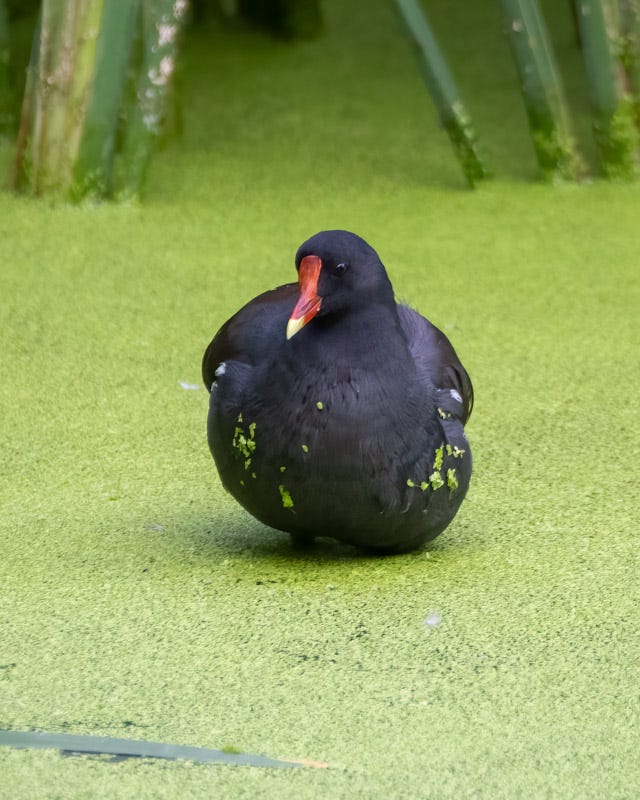
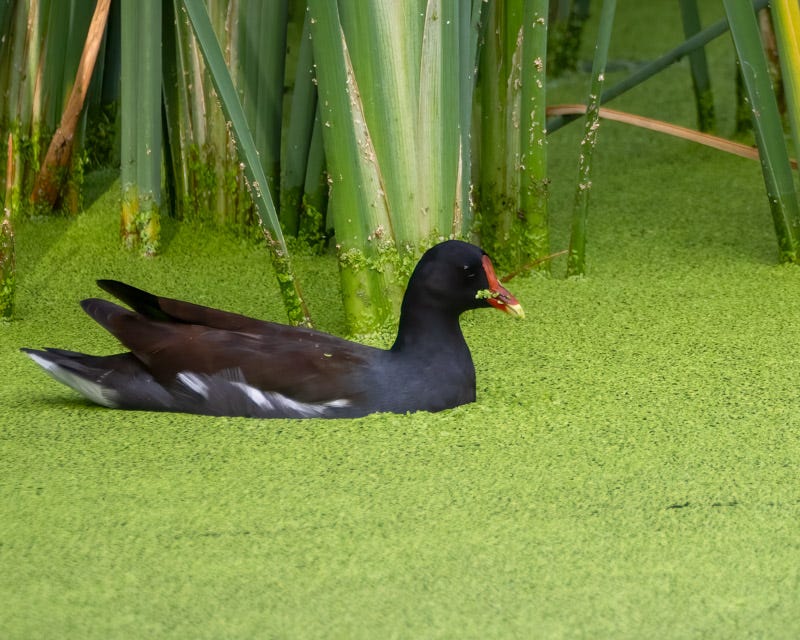
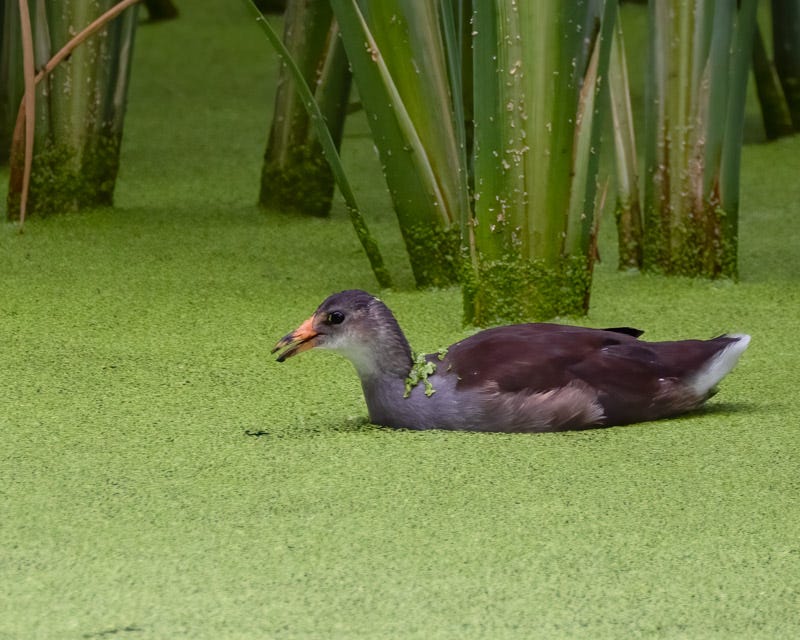
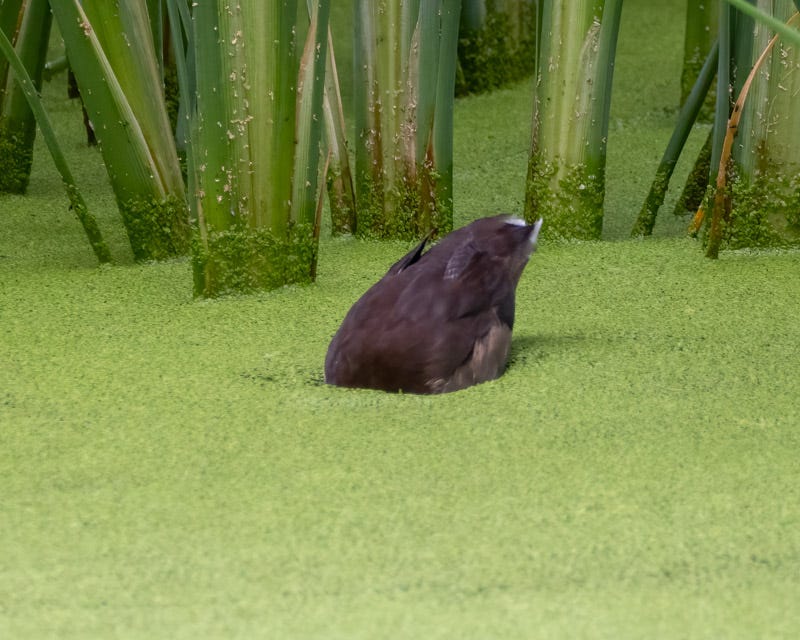
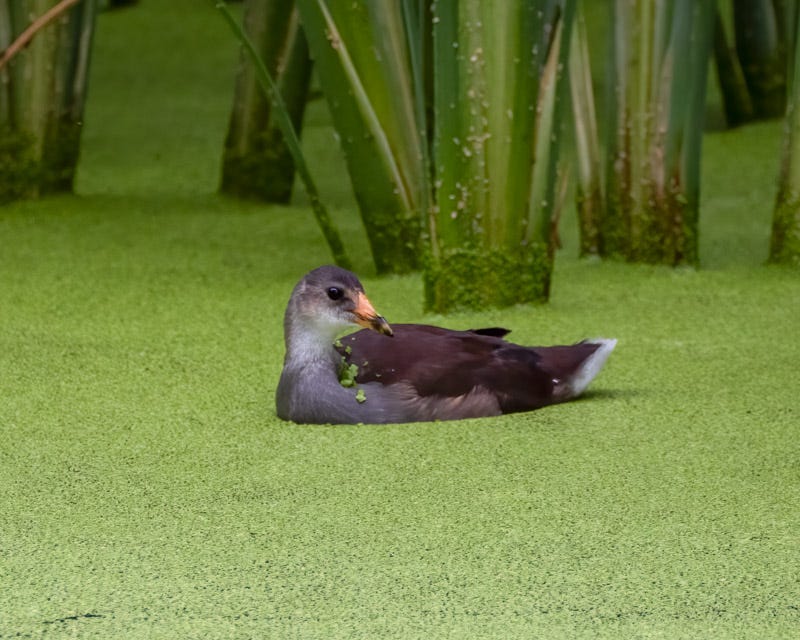
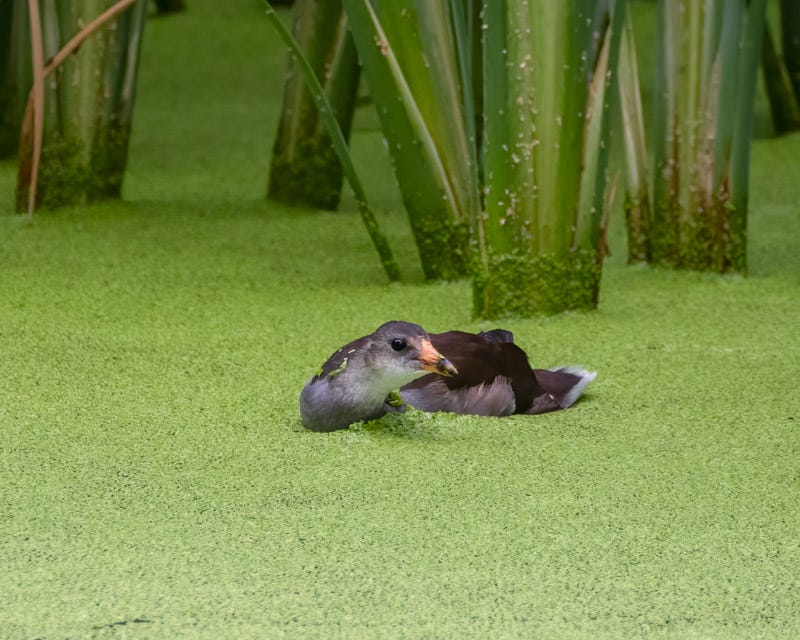
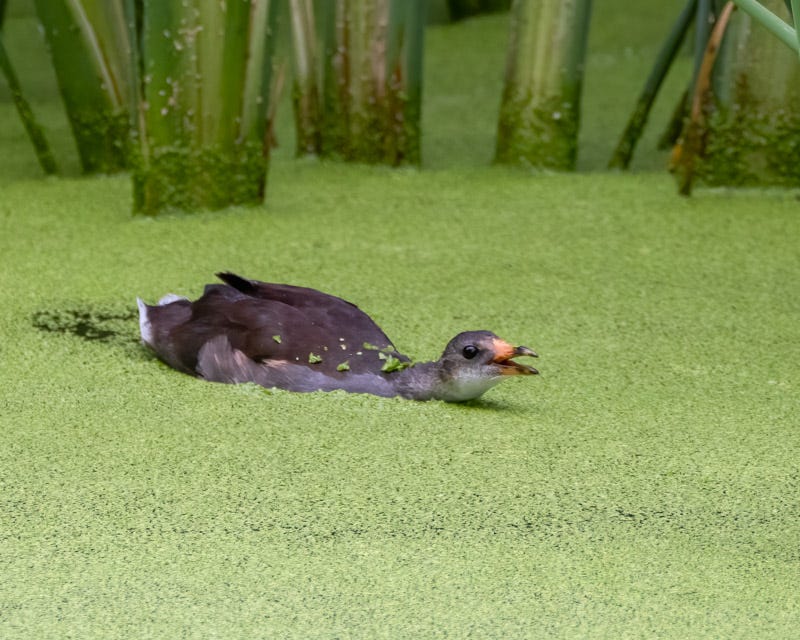
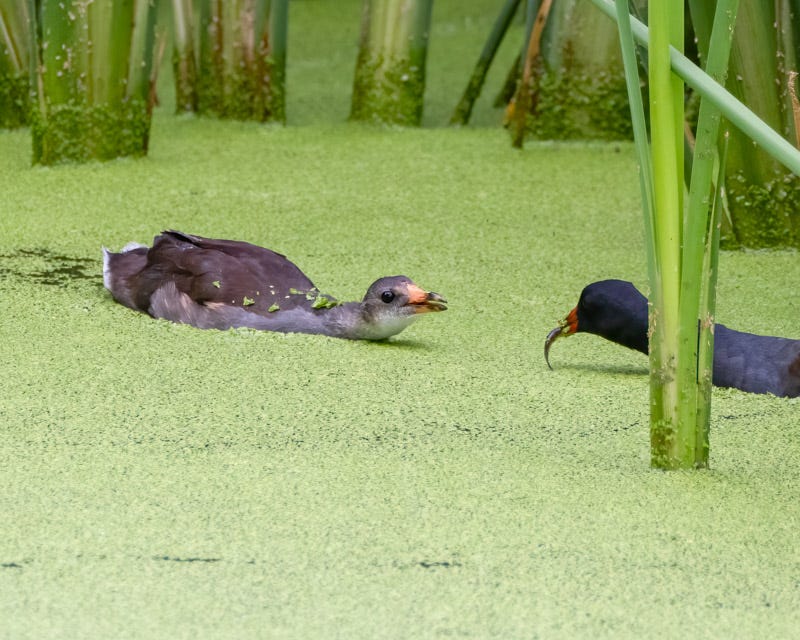
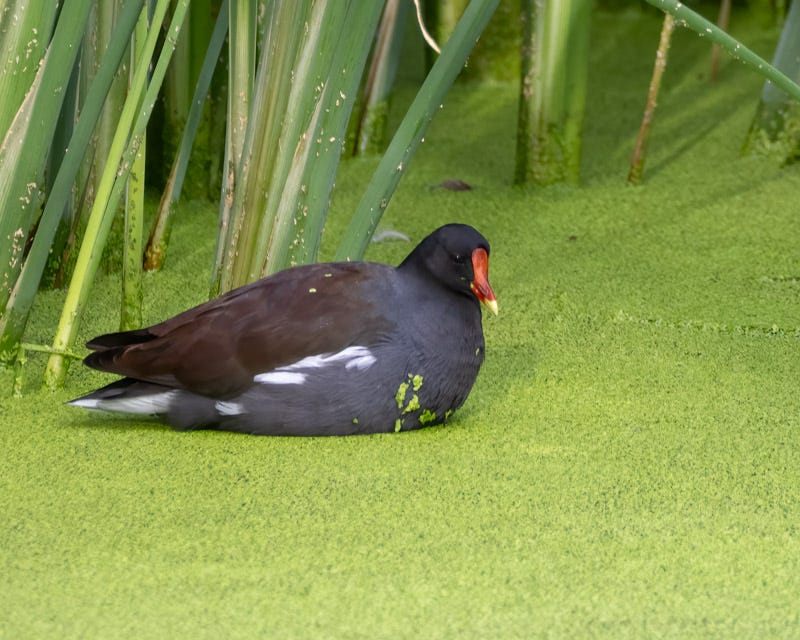
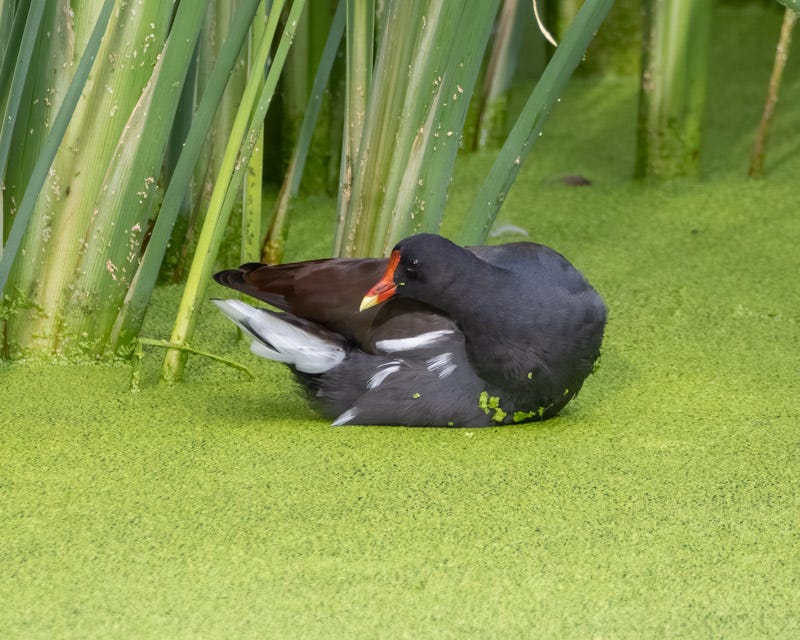
The bird is striking and the marsh is even more so! Like lime green shag carpet!
Great duckumentation, and love the candy corny reference.